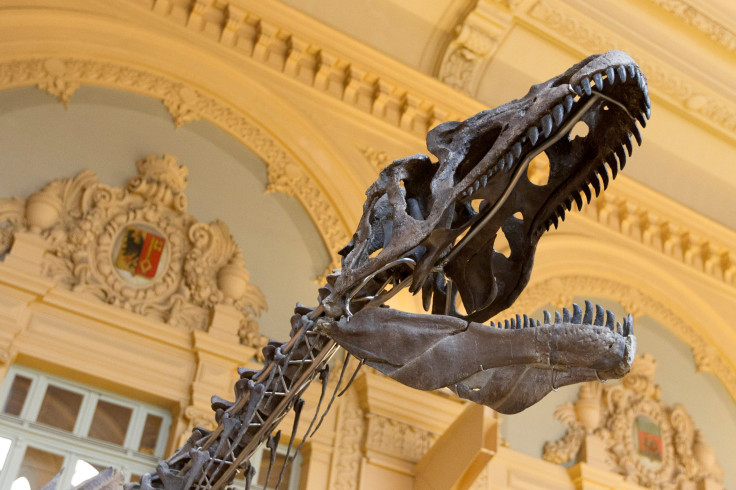Giant Marine Lizard Fossil Found In Morocco, Predator Ruled Seas 66 Million Years Ago
KEY POINTS
- The fossils were found in the phosphate fossil beds of Morocco
- Thalassotitan's diet consisted of difficult prey such as sea turtles, plesiosaurs, and other mosasaurs
- Due to their average sense of smell, the Thalassotitans were predominantly predators and not scavengers
A gargantuan lizard fossil has been found in Morocco. The discovery of the fossil of the giant monster that called water its home has spurred new insights into the life of this now extinct reptile.
Named Thalassotitan atrox, the lizard is a newly discovered species of mosasaur and lived in the late Cretaceous period.
The fossil of the hunter of the oceans is believed to be 66 million years old, according to the study published in Cretaceous Research.
Incredible Fossil Reveals A Giant Lizard Who Ruled The Sea With Teeth And Terror https://t.co/x8axBGVb6Y
— ScienceAlert (@ScienceAlert) August 25, 2022
Known to reach lengths of 12 meters (40 feet), the mosasaurs have no reptile alive today to compete with its size. Even the largest modern reptile -- the crocodile -- grow up to only half the size of mosasaurs.
Based on the wear and damage to the teeth that have been found, the researchers opine the Thalassotitan's diet consisted of difficult prey such as sea turtles, plesiosaurs, and other mosasaurs.
This assumption makes the Thalassotitan the apex predator of its time, playing a role in maintaining ecosystems by keeping the population of other predators in check.
"Thalassotitan was an amazing, terrifying animal," said lead author nick Longrich of the University of Bath in the U.K. "Imagine a Komodo dragon crossed with a great white shark crossed with a T. rex crossed with a killer whale."
The mosasaurs had adaptations better suited for a life in water. They did have a reptilian head, but flippers in place of clawed feet, and shark-like fins for a tail.
Due to their average sense of smell, the mosasaurs were predominantly predators and not scavengers, according to the study.
The fossils were found in the phosphate fossil beds of Morocco, a region that has diverse and properly preserved Cretaceous and Miocene fossils.
The fossils found at the site include skulls, vertebrae, limb bones, and phalanges. These allowed for a complete picture of Thalassotitan's skull, jaw, and teeth, and the skeleton, shoulders, and forelimb, too.
Interestingly, Longrich and his team found though the animal could likely grow to a length of around 9 to 10 meters, which is a little larger than an orca, its skull measured nearly twice that of the orca's, at around 1.5 meters long.
The presence of other fossils near the Thalassotitan remains like the bones of large predatory fish, a sea turtle shell, a plesiosaur skull, and the bones of three different mosasaur species further support the hypothesis that they were part of the giant lizard's diet.
In fact, the fossil of these other animals showed signs of acid wear. This is something one might expect from the action of digestive acids in the stomach of a giant beast, before being regurgitated back out.
The evidence is circumstantial, but still interesting.
"We can't say for certain which species of animal ate all these other mosasaurs," Longrich said.
"But we have the bones of marine reptiles killed and eaten by a large predator. And in the same location, we find Thalassotitan, a species that fits the profile of the killer – it's a mosasaur specialized to prey on other marine reptiles. That's probably not a coincidence," he added.
This opens a sea of possibilities for the researchers to uncover.
"There's so much more to be done," Longrich noted. "Morocco has one of the richest and most diverse marine faunas known from the Cretaceous. We're just getting started understanding the diversity and the biology of the mosasaurs."

© Copyright IBTimes 2024. All rights reserved.





















